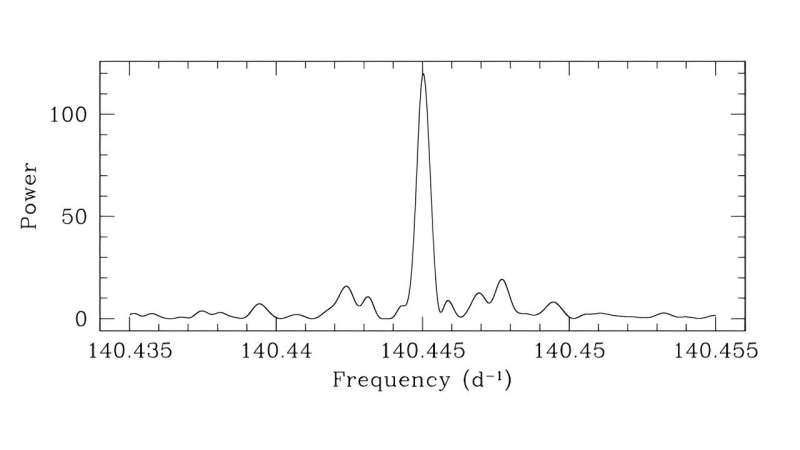February 14, 2024 report
This article has been reviewed according to Science X's editorial process and policies. Editors have highlighted the following attributes while ensuring the content's credibility:
fact-checked
preprint
trusted source
proofread
J0526+5934 is an ultra-short period double white dwarf, observations show

Using ground-based telescopes, an international team of astronomers has observed a binary system containing at least one white dwarf, designated J0526+5934. The observational campaign has revealed that the binary is composed of two white dwarfs on an ultra-short period. The finding was reported in a paper published February 6 on the pre-print server arXiv.
White dwarfs (WDs) are stellar cores left behind after a star has exhausted its nuclear fuel. Due to their high gravity, they are known to have atmospheres of either pure hydrogen or pure helium. However, a small fraction of WDs show traces of heavier elements.
Astronomers are interested in finding and studying double white dwarfs (DWDs), as their mergers are believed to produce new white dwarfs with higher masses. However, although the galactic population of DWDs is estimated to be in the hundreds of millions, only a small fraction of the observable population has been discovered to date.
J0526+5934 was initially identified in 2019 as an extremely low-mass (ELM) white dwarf candidate. Further observations of this object have found that it is a binary composed of an unseen white dwarf primary nearly as massive as the sun and a visible companion, with a mass of about 0.38 solar masses, which may be a subdwarf or a low-mass white dwarf.
Now, new observations conducted by a group of astronomers led by Alberto Rebassa-Mansergas of the Technical University of Catalonia in Barcelona, Spain, shed more light on the properties of this system, indicating a white dwarf nature of the secondary star.
First of all, the observations found that the visible component of J0526+5934 is less massive than previously estimated. The data indicate that this object has a mass of only 0.26 solar masses, therefore it was classified as an ELM white dwarf.
According to the study, the visible ELM WD has a radius of approximately 0.065 solar radii and its effective temperature is at a level of 27,330 K. The star has a helium surface abundance (He/H) of about -2.20 dex and its cooling age was calculated to be 260 million years.
When it comes to the unseen white dwarf, the results suggest that it has a mass of about 0.71 solar masses. The astronomers assume that its effective temperature is lower than 6,700 K.
Given that the orbital period of J0526+5934 was measured to be approximately 0.342 hours, the authors of the paper classified the system as an ultra-short period detached double white dwarf binary. This is the fifth such system so far discovered.
Summing up the results, the researchers concluded that the two components of J0526+5934 will merge in about 3 million years, which will result in the formation of a massive white dwarf, with a mass comparable to that of the sun.
More information: Alberto Rebassa-Mansergas et al, J0526+5934: a peculiar ultra-short period double white dwarf, arXiv (2024). DOI: 10.48550/arxiv.2402.04443
Journal information: arXiv
© 2024 Science X Network




















